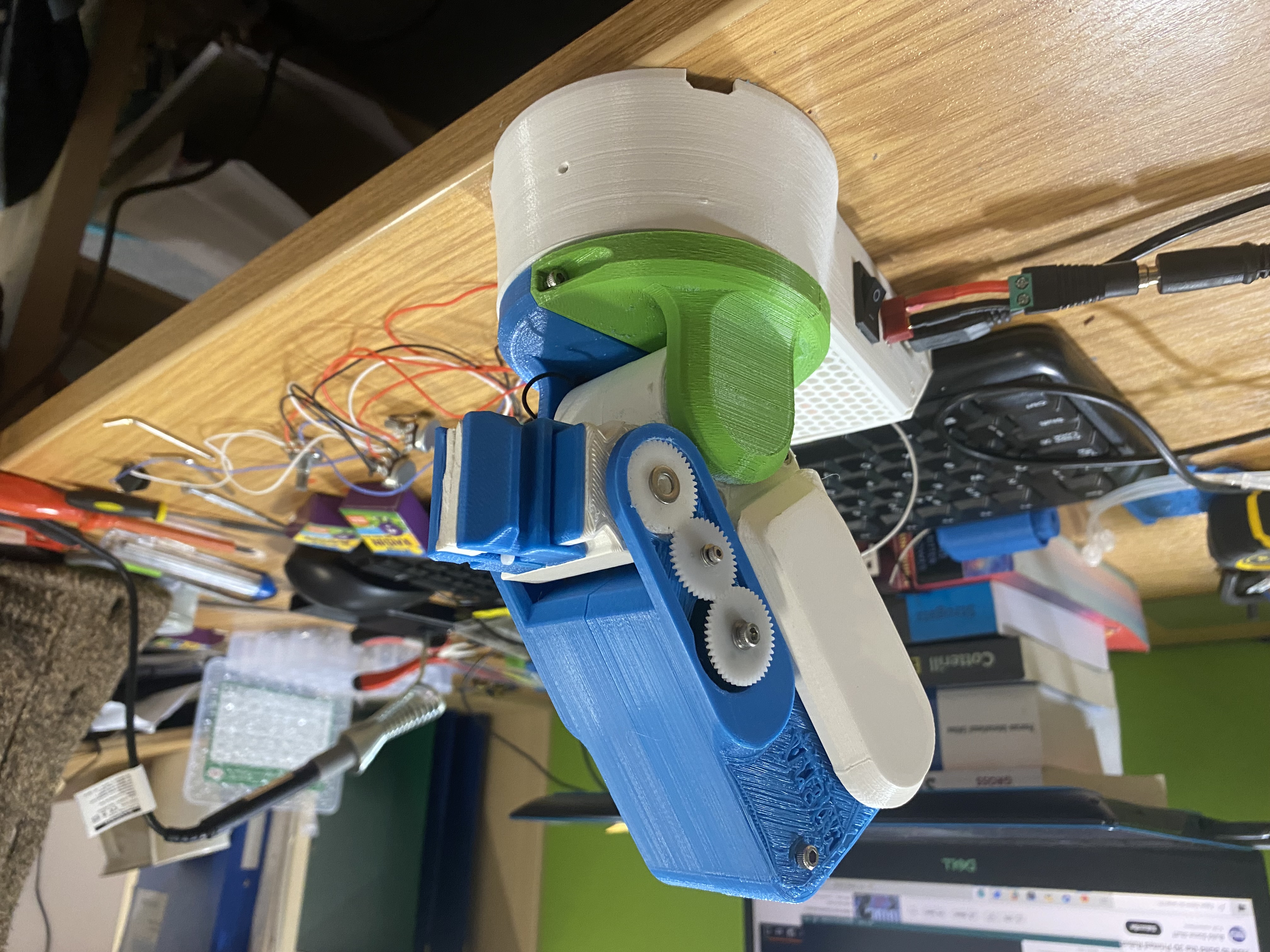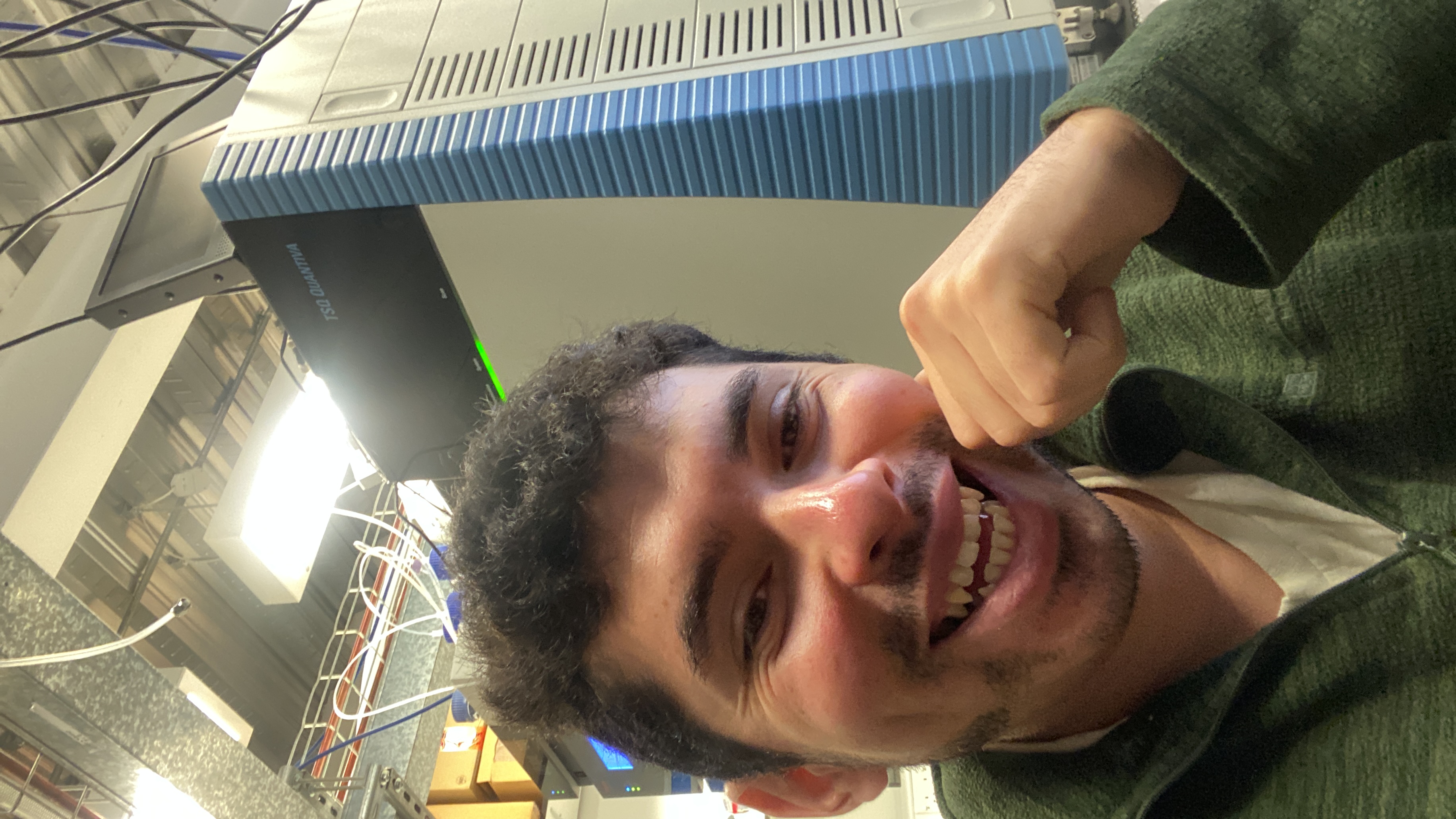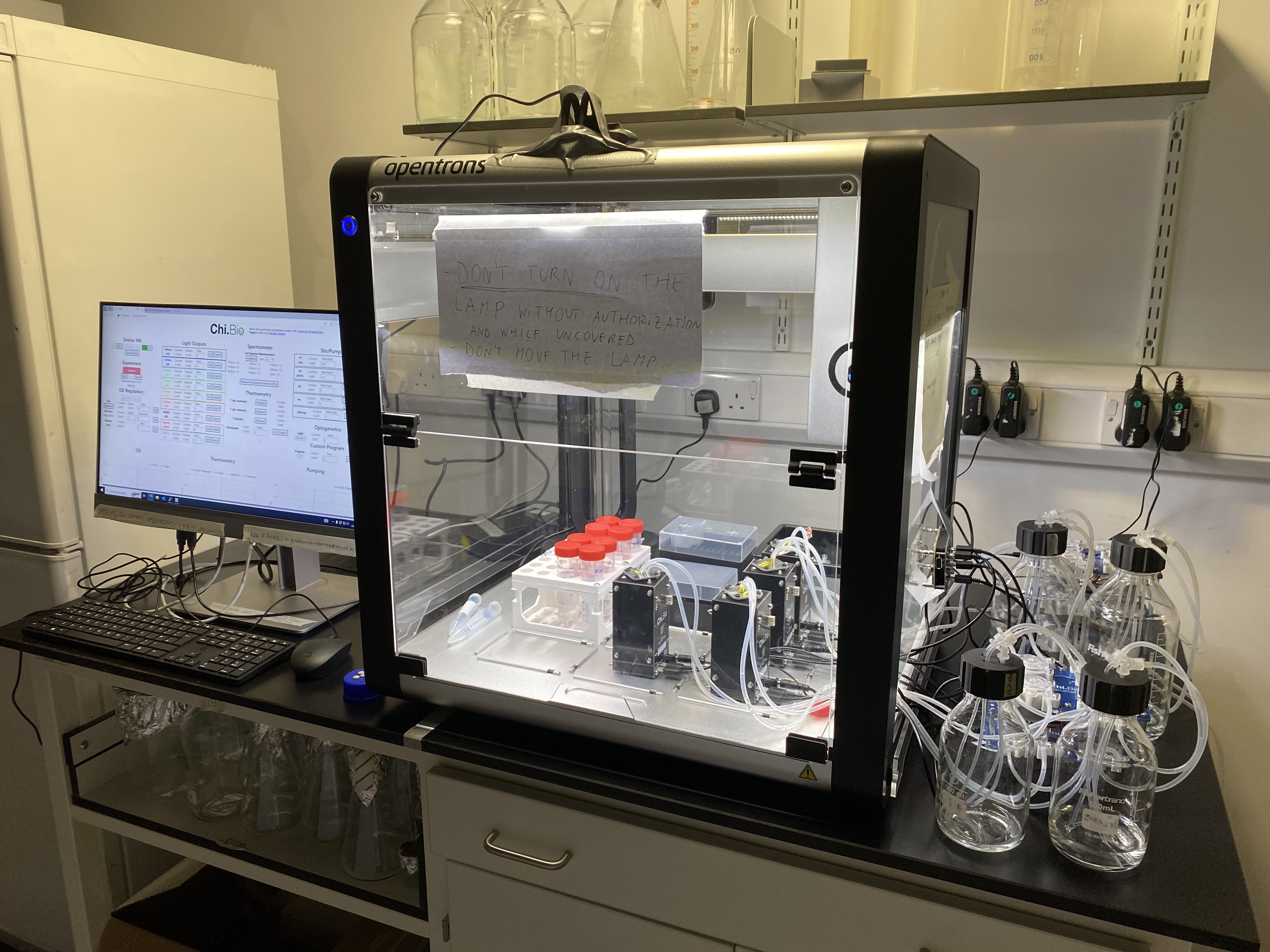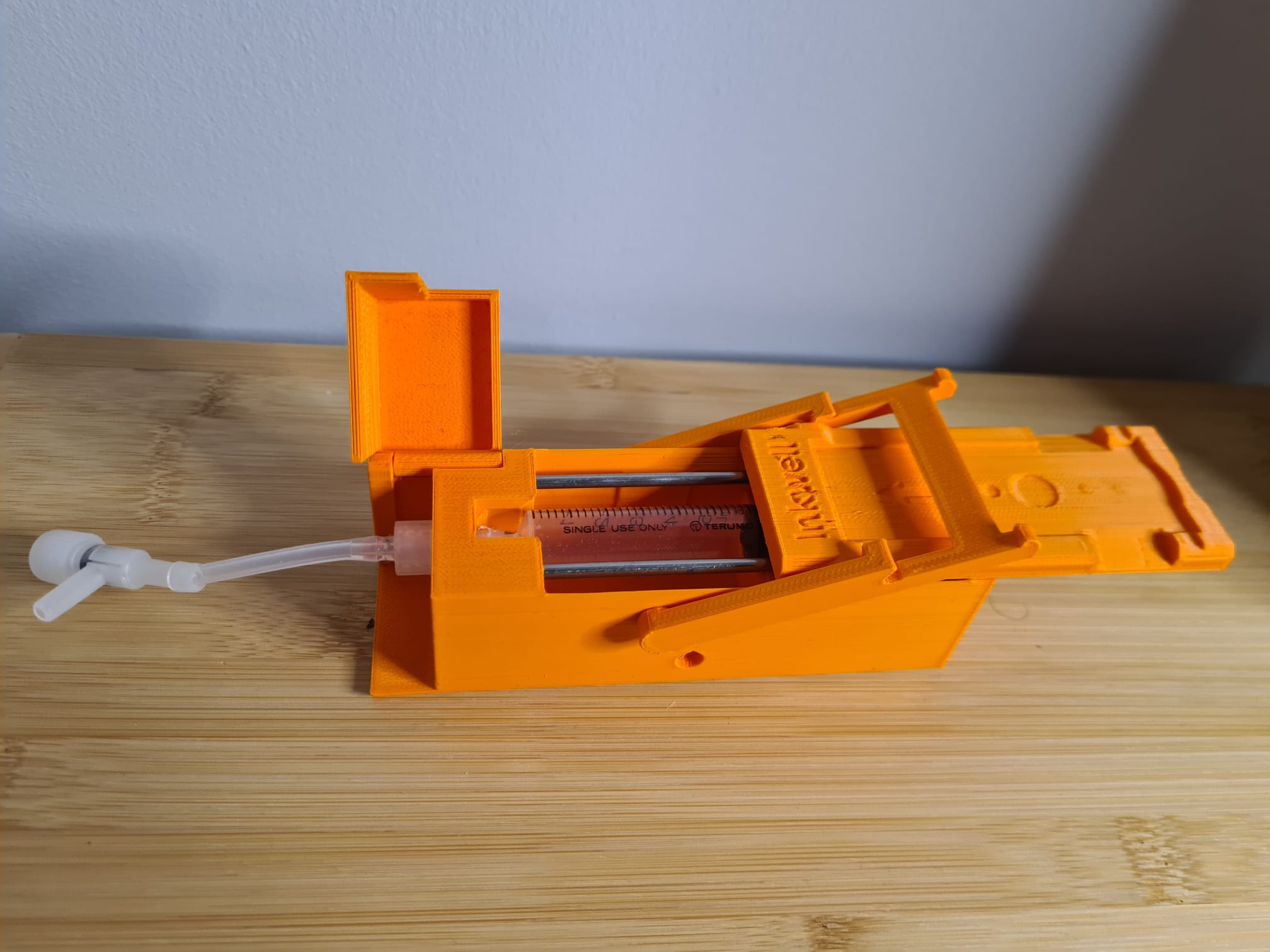The robotic arm is alive!
Watch the robot in action! Opentrons is a platform with a huge flexibility, but nevertheless some operations such as tube moving, opening the lids of the ChiBio reactors, among others, require an extra arm. For this purpose, I built this robotic arm, which is big enough to reach the deck area and small enough to fit into the Opentrons OT-2. The design is entirely from Kelton Serra (Youtube channel: Build some Stuff), who kindly share the 3D models. You can watch the original video here and the tutorials 1 and 2. Please suscribe if you can. Going into details, it uses a microservo for the gripper, a 20kg servo for the shoulder joint (the one that’s supporting the arm weight in the picture), and RC servos for the other joints (wrist, elbow and base). Everything is connected to an Arduino-compatible servo controller, powered by a adjustable power adapter. An Arduino Uno is used to link the controller with the input potentiometers, and a small Arduino script helps to align the potentiometers’ angle readings with the servos’ shaft angles. 



